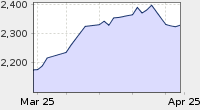Until late 2008, I hadn’t looked at M0 for years. Why? Even the Fed isn’t foolish enough to change it too much. For decades it has traveled in a tight range between about 2% and 10% annual growth, with a pre-panic average since 1960 of 6.0%. M0 growth less real economic growth is one of the most basic measures of inflation. If M0 grows at 6% and the underlying economy at 3%, then there is relatively 3% more money available to spend on goods and services. This is inflation.
I was reading a book last month that discussed the monetary base’s direct impact on inflation. So I decided to take a look at M0 again. I could not believe what the data showed, I almost fell out of my chair it was so mind-blowing. Per the Fed’s own data, we have just witnessed the most inflationary event in modern history. This crazy monetary base chart will make even the most rabid deflationist very uneasy.
M0 has gone parabolic! Year-over-year in December 2008, it was up 98.9%! This is so shocking it defies belief. In late September as the stock panic started, it had grown by 9.9% over the past year. By October, this rate ballooned to an all-time high of 36.7%. In November, it rocketed again to 73.0%. And in December, it surged up to the staggering 98.9% you can see above. Ben Bernanke’s Fed has doubled the monetary base in a single year! Holy cow.
Between January 1960 and August 2008, the 48-year pre-panic average M0 growth rate was 6.0% and the range was pretty tight as you can see above. 10% growth rates were rare and often preceded sharp gains in commodities prices (mid-1970s, late 1970s). The Y2k scare led to the highest monetary-base growth rate ever to that point, 15.8% as the Fed prepared for an expected run on currency. Yet that is now dwarfed by the unprecedented parabolic explosion in M0 seen during late 2008’s stock panic.
That Y2k spike’s aftermath is interesting too. By January 2000, the Fed knew the world wasn’t going to end. Yet it took it over a year to try and take out some of that excess liquidity, and it was a feeble effort. M0 growth didn’t go negative until December 2000, and this modest and brief 2-month episode was the only shrinkage seen in the monetary base since 1961. So even if the Fed tries to reverse its doubling of M0 after it stops being scared of deflation, it isn’t going to happen overnight. The money supply will be much larger going forward.
http://www.kitco.com/ind/hamilton/jan232009.html
------------------------
Check out the rest of this blog here.











